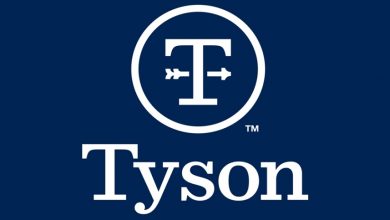10 Tips From CEOs on Working From Home Effectively and Happily

According to Paul Statham, CEO at Condeco Software, “Coronavirus is accelerating working from home, a trend that was already happening in many businesses and organizations. According to our Modern Workplace 2019 report, 41 percent of employers now offer some form of remote working, and we expect that figure to be even higher in our next report due to be released in April.”
Statham continues, “New technology has enabled companies to offer employees this flexibility and that means that even in the midst of a global crisis, businesses can carry on productively with limited impact in a secure and collaborative way. Threats to business come from many areas but those companies that are using technology to maximize their productivity already, including the ability to meet in a virtual meeting online or book desks, workspace or meeting spaces from a remote location, will find it easier to ride out disruption.”
Related: Working Amid Coronavirus: Here’s How to Make the Most of Working From Home
I’ve worked from home for almost 14 years, both remotely as a CMO for a sports company and while I launched and grew my marketing and PR agency. My priority has always been to educate people on how to live happier and healthier lives through movement, nutrition, attitude and communication. I also believe that work-life balance is B.S., so I find ways to juggle it all with some boundaries. Beyond the obvious of getting out of your pajamas in the morning and learning how to use the mute button for calls, below are three tips that focus on healthy habits of work for me:
1. Invest in a standing desk.
This will help alleviate lower back or hip pain and promote better health. But this doesn’t mean you should just stand all day. Move around your house — and I’m not just talking about trips to the fridge. Make sure to find times to sit throughout the day, and push your shoulders back to ensure that you are sitting with good posture. Move around and use different locations throughout your home to inspire creativity, encourage different ergonomic positions and have different views and sounds.
2. Take walking meetings when you can.
If you have a phone call that you don’t need to be in front of a computer to take, pick up your Bluetooth headphones and get outside. It’s great for your muscles, your heart, your happiness and your overall well-being.
3. Meal and snack prep.
Too many times I used to get caught in the “I have nothing to eat” scenario and just snack on energy bars and anything else I could find in the house. While you don’t need elaborate meals, make it a point to have a fridge stocked with fresh fruit, cut up veggies, hard-boiled eggs, greens and proteins such as chicken breasts, tuna or whatever you love. You can get creative with eating habits for “brain food” and productivity.
Related: Coronavirus: Best Practices for Working From Home
For those who are new to working from home, below are seven other tips that thriving CEOs I connected with over email have applied to make their businesses and teams productive and enjoyable as possible.
4. Apply the ROWE mindset.
Tim Jones, CEO of Precision Nutrition, an online nutrition and healthy lifestyle coaching and certification company, applies the ROWE mindset. ROWE stands for “results-only work environment,” and Jones encourages it because it helps remove concerns managers may have around employee productivity. “We don’t track hours or care about how you do your work, as long as you’re getting the results,” Jones said. “By focusing on goals and metrics, the old-school idea of how much time was spent sitting at a desk quickly goes out the door.”
5. It’s OK to mix work and life.
Terry Traut, CEO of Entelechy, a company that develops leadership development, management, and customer experience training programs for Comcast, National Grid, Thermo Fisher Scientific, Sprint, DIRECTV, Constant Contact and others, urges people to “just go with the flow” and try not to be so rigid with separating work life and home life. Traut explains, “Instead of trying to force yourself to be productive when you’re not, or to relax when your mind’s whirling, just go with the flow. Don’t feel guilty for that time you got up at 3:00 a.m. to document a brilliant thought. Likewise, don’t feel guilty for that morning walk in the woods. You’ll find yourself more productive and happier.”
6. Select and set up your tech, strategically.
Working at home can mean overlapping with other family members’ activities and schedules. Andrey Khusid, CEO of Miro, a whiteboarding platform for team collaboration, encourages having multiple devices enabled with all of your work apps. This helps you be as flexible as possible. “For complex and collaborative work, connect your laptop to a large monitor so you can easily navigate between tools for videoconferencing, chatting, project management and whiteboarding,” says Khusid. “Rely on your tablet or smartphone — with their long battery life and webcam — for quick Slack responses or hours of Zoom calls as you’re on the go.” Khusid’s remote tech stack includes:
- Zoom — for videoconferencing
- Slack — for chat
- Confluence — for internal wiki
- Miro — for ideation, strategy and project planning, central project hub, presentations
- Google Suite — for spreadsheets, simple docs
7. Have fun with your colleagues.
DJ Haddad is a father of four and Prime Minister of Design and CEO of Haddad & Partners, a full-service creative agency that employs over 65 people and has worked with international brands such as Microsoft, Capital One, Citibank, Barclays, JPMorgan Chase, Sallie Mae and HBO. He has a mantra of never taking himself too seriously. “I am lucky to work with the greatest team on the planet, and somehow we have all become friends and created this amazing chemistry remotely over Microsoft Teams. Just like in a real office environment, we joke around, we make fun of each other, we make stupid GIFs of each other, we share high school prom photos, vacation photos, we live-chat while watching the Oscars, etc. We have Team chats for everything — book club, employees with kids, employees without kids, competitions, etc. It makes it easy for us to still have fun and have ‘water cooler talk’ throughout the day.”
Related: Is Working From Home the Next Step to Cracking the Glass Ceiling?
8. Transfer your commute time to intentional rest time.
John Fitch & Max Frenzel, co-authors of Time Off Book (out in May) suggest that we calculate the amount of time we normally have to commute and translate that time to our “rest” allowance. This is time for us to detach from our work. Instead of starting our day off by stressing out about getting somewhere on time, invest that time into either a relaxing ritual that gets you to a calm and clear state of mind or invest it into winding down your day so that you don’t form a habit of working into the night. The authors explain how this commute time can be a time to set an intentional container for separating work and leisure at home.
9. Remove distractions and set a schedule for these distractions.
What distractions are around you? Nettie Owens, a Certified Professional Organizer in Chronic Disorganization and founder of Momentum Millionaire Network, tells us to think about these distractions and plan your work around them. For example, will noise be an issue at home (while the kids are possibly home, too)? If so, noise-canceling headphones are a must. Set a schedule to let your family know, “I am going to be working from 8 am to noon, then taking a break for lunch.” This helps ensure you can focus without the nagging questions. In addition, you may need to set up some structure for the family to have activities or tag team working with your partner. Is social media a distraction? Then download a social media blocking tool and set your “work hours.” Are you hungry? Decide on designated snack times. Unwashed laundry? Plan to do chores before and after work, and decide how much time you will dedicate to these tasks.
10. Try a zero-based calendar.
Cathryn Lavery, co-founder and CEO of BestSelf Co, a company that makes planners and productivity tools for personal development, believes that especially with remote work, zero-based is the way to go. This means you budget every minute of your day to help you stay on track and monitor your progress. Lavery explained to Well + Good that you don’t need to skip out on your favorite activities with a zero-based calendar, you just need to ensure you schedule them with a specific time block. This way you won’t push off the activities we enjoy due to a lack of time. She reinforced to me over email, “By adding all tasks to your calendar with specific time blocks, you’ll start to become more aware of how long various tasks actually take. Having less ‘open space’ on your calendar can protect your free time and increase your productivity.”
Working from home offers flexibility, liberty, and opportunities for you to create healthier habits while remaining productive. As Slack, Zoom, Trello and Basecamp will continue to help us operate more effectively as teams, make sure that as an individual you get outside, see people in person when you are able, and follow a lifestyle where you can protect your personal time — especially family time like dinner and evening routines.
Working from home offers flexibility, liberty and opportunities for you to create healthier habits while remaining productive. As Slack, Zoom, Trello and Basecamp will continue to help us operate more effectively as teams, make sure that as an individual you get outside, see people in person when you are able, and follow a lifestyle where you can protect your personal time — especially family time like dinner and evening routines.




